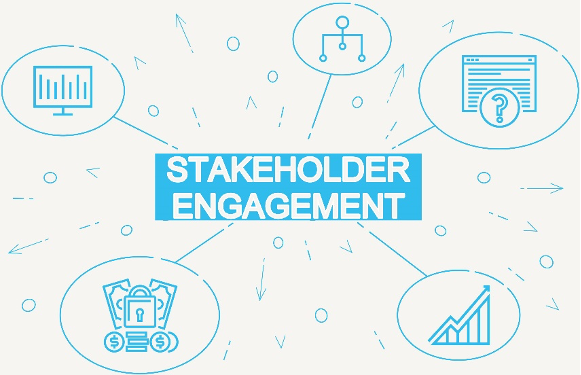by Alex Ryan
Stakeholder engagement is critical to every organization. Stakeholder input and expertise provides valuable input to strategy, goals and drives important decision-making. Enthusiastic and invested stakeholders are essential to success.
Here’s how to get (and keep) Stakeholders engaged.
1. Put the Right Stakeholders in Place
A disengaged stakeholder can have detrimental impacts on the success of an initiative and the organization at large. Make sure you have the right people involved by asking these key questions:
Can you define what you need from the stakeholder?
If you can’t define what you need from them, this may lead to disengagement and disruption.
Can the project or group function without the stakeholder?
If the answer is Yes, then the stakeholder may not need to be involved.
If the answer is No, then clearly define the stakeholder role and influence; make sure they are empowered.
Does the stakeholder represent decision makers (senior leadership) or your impacted audience, such as employees or customers?
If the stakeholder is not a decision-maker and does not represent the people your initiative impacts, then they may not have a role in the project.
2. Send the Right Message at the Right Time
You want your stakeholders to know when the project is in trouble or there is a risk to meeting your objectives, but you don’t want that to be the first news that they hear!
Establish a regular cadence of stakeholder communication. The right message at the right time will increase stakeholder engagement and prepare them for critical decision making.
3. Communicate Early, Regularly, and Consistently
Engage and inform early, often, and clearly. Misguided or inconsistent messaging will put your stakeholders on the fast track to disengagement (see best practice # 2).
- Regular and consistent communication – define a daily, weekly, or monthly schedule for communications, status and, and risk identification – then stick to it!
- Start engaging (communicating) early so that Stakeholders can see the progression and progress. The first thing your stakeholders hear shouldn’t be bad news. Start at the beginning and keep the information flowing throughout the project.
- Be consistent but in the right format – not every message is meant for email! Email is great for regular (daily/weekly/monthly) updates and status. Schedule a meeting for quick decisions, a deep dive into metrics, or risk mitigation. Pick-up the phone if you aren’t hearing from a key stakeholder.
4. Provide the Right Level of Detail
Present project data in a way that’s easy to understand – the faster your stakeholders can process information, the faster they can make decisions.
Engaging with Leadership Stakeholders
Keep it high level – think strategy, metrics, organizational alignment, objectives, and risk mitigation.
Engaging with Impacted Audiences
Keep it tactical – think benefits, WIIFMS (what does it mean for them), dates, and deadlines.
5. Provide Regular Opportunities For Collaboration and Discussion
Collaboratively establish an expectation for how often you and your stakeholders should meet, review, and discuss next steps. Then, take the initiative to make those discussions happen.
By following these 5 steps, you’ll combat stakeholder disengagement while strengthening your working relationship, ensuring that your organization wins.

